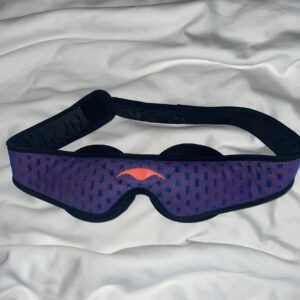Understanding Red Light Therapy
Red Light Therapy (RLT) is an innovative treatment. It utilizes low-level red light to address several health concerns. These cutting-edge therapies, primarily performed on red light therapy bed, have shown fascinating results in clinical studies. Red light therapy beds are devices engineered to deliver this therapy efficiently to the whole body.
Patients lie down on these beds much like they would on a tanning bed. But, instead of UV rays, they’re exposed to safe, natural, and beneficial red light. This exposure triggers biological processes that can lead to improved skin health, pain relief, and faster wound healing, among other benefits.
With red light therapy beds becoming increasingly popular, it’s crucial to understand how they can contribute to our overall health and well-being.
Table of Contents
Benefits of a Red Light Therapy Bed
The advantages of using red light therapy is numerous and backed by scientific evidence. A significant benefit is enhanced skin health. By promoting the production of collagen and elastin, two key proteins vital for maintaining skin elasticity and reducing wrinkles, red light therapy beds can help you acquire a youthful glow.
Moreover, red light therapy is proven effective in pain management. Those suffering from joint and muscle pain, or conditions such as arthritis, may find relief through consistent use of a red light therapy bed. The therapy, according to research, aids in reducing inflammation and enhancing circulation, which can alleviate pain and promote recovery.
Another important advantage of using red light therapy is the ability to accelerate wound healing. The red light exposure stimulates the body’s natural healing processes, potentially leading to quicker recovery times following surgeries or injuries.
To sum up, red light therapy beds are not just a wellness fad. They are a scientifically-backed treatment option with a wide range of health benefits. Whether you’re seeking to enhance your skin, manage pain, or recover faster from injuries, a red light therapy bed might be an investment worth considering.
The Science Behind RLT
Red light therapy beds work their magic at a cellular level. These beds emit wavelengths of red and near-infrared light, penetrating deep into the body’s tissues. This light delivers energy to our cells, particularly the mitochondria. The mitochondria, often referred to as the “powerhouses” of our cells, absorb this light energy and convert it into a form of energy that our bodies can use – adenosine triphosphate (ATP).
ATP serves as the primary fuel for our cells, powering a host of biological processes. Essentially, red light therapy beds supercharge our cells. They help improve efficiency of cellular function and rejuvenating our bodies from the inside out. This process, known as photobiomodulation, is the science behind the many benefits of red light therapy.
The biological effects of red and near-infrared light from the red light therapy beds are extensive. Red light, with a wavelength range of 630-660 nm, primarily affects skin health, promoting collagen and elastin production and accelerating wound healing. Near-infrared light, on the other hand, penetrates deeper into the body, reaching muscles, nerves, and even bones. This deeper penetration aids in pain management, reduces inflammation, and promotes faster recovery from injuries. Thus, the red light therapy bed is more than just a wellness tool; it’s a scientifically-backed method for enhancing overall health.
How Does a Red Light Therapy Bed Work?
A red light therapy bed looks much like a typical tanning bed with a similar structure and overall design. However, instead of UV light bulbs, it’s equipped with LED lights that emit red and near-infrared wavelengths. When you lie on the bed, these lights permeate your skin to stimulate cellular activity.
Using a red light therapy bed is straightforward. After setting an appropriate wavelength and duration, you simply lie on the bed and let the red and near-infrared lights work their magic. The treatment is non-invasive and does not cause any discomfort. Most sessions last between 10 to 20 minutes, and the frequency of use depends on your health goals and the specific recommendations of your healthcare provider.
When comparing red light therapy beds with other red light therapy devices, the beds have a distinct advantage. They allow for whole-body treatment, ensuring all your cells get exposed to the beneficial light. Handheld devices or panels, on the other hand, can only target specific areas of your body at a time. Therefore, for a comprehensive approach to red light therapy, beds are often the preferred choice.
Benefits of Using a Red Light Therapy Bed
Red light therapy beds offer a wealth of health benefits backed by numerous scientific studies. They can be a game-changer for your skin health. The red and near-infrared lights penetrate deep into skin layers, stimulating collagen production, and reducing signs of aging. You’ll notice your skin becoming smoother and more radiant with regular use of a red light therapy bed.
Another significant benefit of red light therapy is enhanced muscle recovery. If you’re an athlete or fitness enthusiast, you can take your recovery process to the next level with these beds. The red light promotes protein synthesis and improves blood flow, helping your muscles recover faster post-workout.
Red light therapy can also provide mental health benefits. Emerging research suggests that the red light can stimulate the production of serotonin, a hormone that regulates mood. Therefore, frequent use of a red light therapy bed might help to combat anxiety and depression, improving your overall well-being.
In conclusion, red light therapy beds are a multipurpose tool, supporting skin health, accelerating muscle recovery, and potentially boosting mental health.
Who Can Benefit From RLT Beds?
Red light therapy beds are a beneficial tool for a wide range of individuals. If you’re someone who’s seeking to maintain youthful, radiant skin, these beds can be an excellent addition to your skincare routine. Athletes and fitness enthusiasts can also reap benefits from the use of red light therapy beds, as they promote faster muscle recovery, minimizing downtime between workouts. Moreover, individuals struggling with mental health issues like anxiety or depression might find a red light therapy bed to be a supportive tool due to its potential mood-enhancing effects.
However, while red light therapy beds can offer numerous advantages, they’re not suitable for everyone. Individuals with photosensitivity or certain skin conditions may experience adverse reactions to the therapy and should consult with a healthcare provider before use. Pregnant women are also advised to avoid using red light therapy beds until further research verifies their safety during pregnancy. Always remember that while red light therapy beds can complement a health regimen, they should not replace traditional medical treatments or advice.
Conclusion
Red light therapy beds have emerged as a remarkable tool in the realm of health and wellness. Their versatility makes them suitable for those in pursuit of radiant, youthful skin, as well as those looking to accelerate post-workout recovery. Even mental health can potentially be improved due to the mood-enhancing effects of red light therapy.
However, it’s crucial to remember that red light therapy beds are not a one-size-fits-all solution. People with photosensitive skin conditions might experience unwanted side effects and should consult a healthcare professional before going ahead. Pregnant women should also exercise caution, refraining from red light therapy use until more research comes to light about its safety during pregnancy.
In conclusion, red light therapy beds can be an excellent supplemental tool for a variety of health and wellness goals. It’s worth considering if this form of therapy could be beneficial for you, but always remember to seek professional advice before starting any new treatment regimen. The journey towards health and wellness is a personal one, and red light therapy beds could potentially be a valuable addition to that journey.






